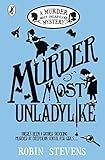Why Hong Kong's Luminescent Blue Coastline Is A Cause For Concern
Language
Reading Level
Listen to Article
On Thursday, January 22nd, social media sites were buzzing with excitement at the pictures of the blue patches of glimmering water along Hong Kong's coastline. However, experts were not as thrilled. That's because while the algal bloom responsible for this mesmerizing sight are not toxic to humans, they are well-known to wreak havoc on marine life.
Called Noctiluca scintillans or sea sparkle, the bloom is triggered by the abundance of nutrients - nitrogen and phosphorous from farm waste allowed to run-off untreated into the ocean. While good in small doses, it is a problem in such large amounts, because it encourages the rapid growth of this harmful marine dwelling species.
Though it looks and can even act like algae, the sea sparkle, which takes on a red hue during the day, is a single-celled organism or zooplankton that displays characteristics of both plant and animal. That's because inside its tiny transparent cell walls, it hosts millions of green algae. In return, the algae helps the organism obtain energy from the sunlight it draws in to photosynthesize. What makes this species of zooplankton lethal is its voracious appetite. It devours anything it comes across. This means that it not only eats all the small organisms that are around, but also the native algae that provides nutrition for the tiny crustaceans.
Since the sea sparkle is too big for them to eat, the crustaceans are left with nothing to feed upon and perish, leaving no food for the larger fish that depend on them for nutrition. In fact, the only predators the sea sparkle have are unpopular ocean dwellers like jellyfish and gelatinous salps - creatures that not palatable to larger marine animals.
If that's not bad enough, their unchecked rapid growth results in covering large swathes of water preventing light from penetrating the ocean surface. Without sunlight, the phytoplankton and seagrass that lie beneath cannot photosynthesize and therefore not produce oxygen that is vital for the survival of not just ocean animals, but humans too! That's because a majority of the earth's oxygen comes from these tiny ocean plants. With the crucial gas gone, the once thriving areas transform into what researchers refer to as "dead zones" - places where nothing can survive!
The only comforting news is that the algal blooms do not last for long. According to researchers, the sea sparkle disappears within short periods of time simply because the ecosystem cannot support their large numbers. This means they start to compete with themselves for the paltry oxygen and nutrients that remain and soon start to die out.
Unfortunately in some parts of the world, like the Arabian Sea and Gulf of Mexico, the unabated dumping of untreated nutrient-rich sewage has resulted in the algal blooms appearing every winter, since the 2000's. The several "dead zones" created by this lethal zooplankton now covers over 95,000 square miles. This is causing a lot of concern amongst researchers because once oceans get to this stage, it takes them a long time to recover - something that is not possible unless careless human habits are curtailed.
Resources: naturworldnews.com,ideo.columbia.edu,huffingtonpost.co.uk,nationalgeographic.com
Cite Article
Geography
Learn Keywords in this Article
481 Comments
- aujhi1234over 9 yearsI wish i was in hong kong
- waverly over 9 yearsi love the blue and red but its so sad that its killing sea life
- coolnessover 9 yearsit is so pretty but it is sad that it kills things!
- nat111222333444over 9 yearsi live in Hong Kong it isnt cool sea life is dieing
- dominicover 9 yearsrock on man that is so cool I can't believe that it is blue and because of algae probably. and if it isn't what is it.
- friends4evover 9 yearsjust to tell ya it really isn't cool because like who wants a dead zone???!!!! It's like nothing lives there so Kong Hong might not get lot of fish which would cause to rising the price for fish until the sea sparkle is gone!!!!!!! Which would be completely and utterly not cool!
- emberleafover 9 yearsIts not blue because of algae, it is because of the sea sparkle. And its not cool, it kills marine life.
- evbosover 9 years1. it's toxic to marine life but not humans 2. it's eating all of the smaller organisms 3. a place where nothing survives sea sparkle
- eliover 9 yearscool
- friends4evover 9 yearsI'm sorry it looks pretty and all but its not cool to all of you ppls out there
- stan marshover 9 yearscool
- henryover 9 yearshum cool
- commander wolvover 9 yearslol




